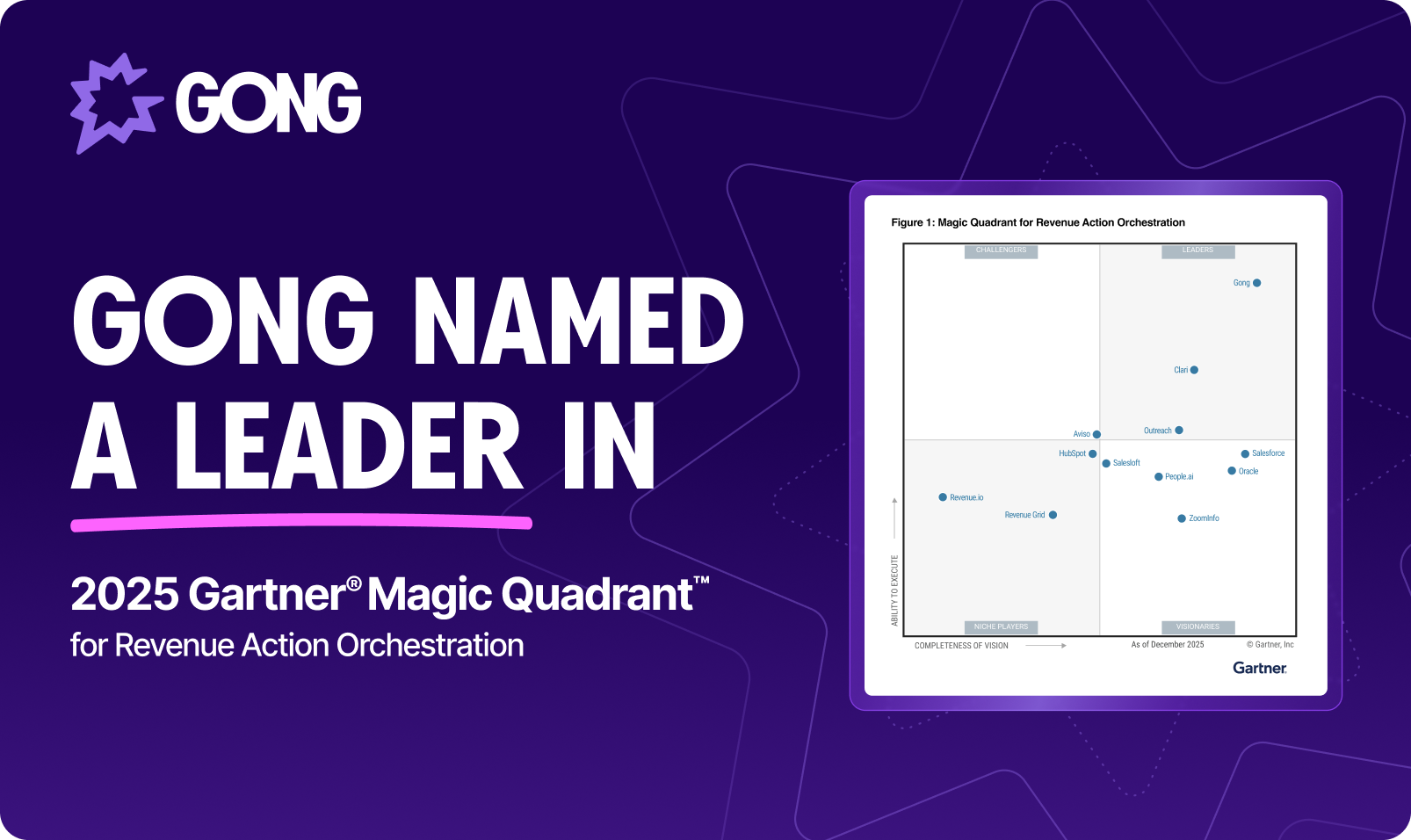Executive insights
Why owning the full buyer journey propels growth (and how we did it at Datarails)

Aviv Canaani
CRO at Datarails
Published on: November 21, 2024

As the CRO at Datarails, I’ve witnessed a remarkable transformation in our go-to-market strategy: In just three years, we’ve seen our sales team grow by over 400% and flipped our sales model from 95% outbound to 95% inbound. Needless to say, we’ve learned several priceless lessons. The first is understanding the interconnectedness of teams across the buyer journey. The second is the role data-driven insights can play in scaling an inbound revenue engine.
Today, I’m going to those lessons with you and explain how we use revenue AI to bridge the gap between marketing and sales as part of our inbound strategy. It’s given us unprecedented visibility into our customer interactions, which helps us make informed decisions that drive growth.
As a company that’s obsessed with data — we automate data consolidation across all sources for finance leaders who use Excel — it’s been a highly gratifying and valuable learning process.
Why process ownership is so critical to growth
CROs need to not only understand but own the entire buyer journey. In my previous role as the VP of Marketing of Datarails, I was focused on the MQLs scheduling valid meetings we could achieve through paid media, brand awareness and engagement, etc. Today, with our focus so squarely on inbound sales, I’m much more attuned to the interplay between indicators of success throughout the buying process, including:
- Engagement
- Conversion rates
- CAC
- Customer satisfaction
- ARR
At Datarails, we use Gong’s Revenue AI to train and guide our sales team and suggest actionable insights.
A unified revenue strategy is what feeds our company’s growth.
In effective go-to-market motions, each person is attached to one phase of the journey, but only when you look at the full machine can you ensure that it operates smoothly. In marketing, this is much easier, as everything is captured in marketing automation tools and paid channels. In sales, it’s much harder, as that part of the buying journey is captured over an unstructured Zoom call between people, rather than via clicks or forms submitted online.
I’ve also witnessed firsthand that an efficient and profitable machine also relies on the ability of revenue leaders to immediately review the effect of new messaging on win rates, quickly understand the context of a committed deal’s calls, and forecast accurately in real time.
As Udi from Gong often says, “ T he goal of marketing is to make sales easy.” Therefore, it makes sense to have a unified revenue organization led by one person to avoid blame being tossed between marketing and sales. As a CRO who owns both marketing and sales, I can’t blame the sales organization for not closing the great leads they get from marketing, and I can’t blame marketing for sending the sales team poor leads.
How we ramped productivity while scaling by 400%
Anyone who has tackled hyper-growth can tell you that the ability to get it right mid-flight is nearly impossible… but incredibly lucrative if it happens.
Datarails is in a period of hyper-growth, so the practices that worked for our once-small sales team simply don’t work for our larger, more complex sales organization. Additionally, our sales team has had to figure out how to remain as productive as possible while rapidly expanding. It’s in this context that revenue AI once again proved itself invaluable to me as a CRO and to our revenue organization:
We used revenue AI to refine our workflows and improve productivity while growing our sales team by more than 400%.
It’s been easy, for example, to understand how our new hires perform as a team and as individuals — and where there are bottlenecks in their workflows — by tracking how well they onboard and adopt new messaging. We can also see how that messaging lands with customers, as evidenced by bumps and dips in conversions and win rates for reps we know used the required messaging.
That’s why Datarails embraced a data-driven approach using Gong’s Revenue AI platform, and is now able to:
- Accurately predict deal outcomes with AI-powered insights: At the end of the quarter, I can ask Gong, “Will this deal close this quarter?” to better adjust our forecasting.
- Identify at-risk deals and get them back on track: I look at the deal warnings from Gong in the pipeline each month, and work with our team to overcome them.
- Align our sales and marketing efforts: Our marketing team now uses Gong to understand marketing attribution to different opportunities based on what clients said on calls.
- Gain a complete view of the buyer’s journey: After important closed-won deals, I review the whole buyer journey, both in our marketing automation tool, CRM, and Gong to see what made the difference.
This visibility has been a real boon to our frontline managers and to our enablement efforts. It has also meant I can more accurately predict whether the deals I expect to close will close, as I can query Gong’s Ask Anything feature for the percentage probability that each deal will close. If a deal is at risk, I can instantly dig into why and learn which next steps will get it back on track. That’s invaluable information to have when I’m making business decisions and offering my teams guidance during hyper-growth.
AI guides and aligns us using unbiased insights
The challenge of scaling isn’t just about managing more people. It’s about maintaining quality, ensuring consistent messaging, having visibility into the performance of a larger team, and so much more. Revenue AI provides me and my team with the ability to do all of this effectively, based on objective and accurate data.
For example, at the end of the month, I no longer need to ping individual salespeople and ask them what they think is going to happen with their deals. I can ask AI. It’s unbiased, and tells me what it understands to be true based on the billions of data points at its disposal. If a deal’s at risk, I know about it, and I know precisely where it’s going off track, whether the issue is “no next steps set” or “challenges in getting to power.” I’m not left guessing about the best course of action.
That’s also true in terms of the initiatives we launch and new motions we test on the marketing team. We had no idea, for example, how valuable our TikTok campaign was until a prospect told one of our sales reps that it’s what propelled them to ask for a demo. The marketing team used AI trackers and discovered that a lot of prospects are mentioning that campaign, so we’re now deepening our investment in that channel. Are we happy with our newfound ability to align sales and marketing? You bet.
I can say with certainty that my team and I wouldn’t be in this position without revenue AI.
We’ve found our better way to revenue
In the world of modern revenue operations, having a solution that provides a complete view of the buyer journey isn’t just an advantage — it’s a necessity.
As we continue to scale our business at Datarails, revenue AI is giving our team the ability to make data-driven decisions that fuel growth. From improving our marketing attribution, to tracking how reps negotiate, to enhancing our sales processes and forecasting, we’re truly leaning into a “better way to revenue.” I now understand firsthand what it means to have the ability to detect gaps in our buyer journey and access insights into issues that were previously hidden or difficult to access.
To say I’ve had a wow moment with Gong’s revenue AI is an understatement.
The solution allows me to transparently understand everything that’s happening in our buyers’ journey from the moment they meet one of our reps onward. I can’t imagine how we’scale and support our revenue team without it.
Discover more from Gong
Check out the latest product information, executive insights, and selling tips and tricks, all on the Gong blog.



